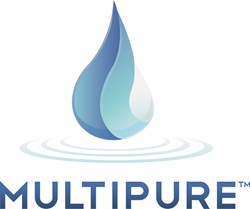You have no items in your shopping cart.
If you've ever gone on a research kick about water filtration, you've probably come across Reverse Osmosis technology. It's a remarkable technology that was developed initially as a response to the need to generate pure, potable water at sea.
The general setup usually consists of a carbon pre-filter, a reverse osmosis membrane that operates under constant pressure, and usually some form of post filtration.
Then the water is usually stored in a pressurized storage tank where it feeds into a faucet for access.
The Good and the Bad
Reverse osmosis is really good at removing a huge spectrum of contaminants (but not ALL contaminants, as is commonly believed). In some water source situations, virtually nothing else besides RO will do the job (if you have insanely high levels of nitrates, for example).
Multipure systems pair very well with RO as a post filter. It can take a reverse osmosis system from good to great, that way, offering another buffer for contaminants that RO doesn't reduce entirely (such as nitrates, chloramines, etc...) as well as offering protection from contaminants that are able to pass through the Reverse Osmosis Membrane (such as volatile organics). In highly contaminated well water systems, I usually recommend an RO system with either an Aquaversa or Aquaperform as the post filter. It's what I would use in a situation like that.
But a lot of people these days are trying to avoid reverse osmosis for a number of reasons. For one, there's the ever-present problem of water shortage. RO systems designed for the home are usually rated at 50 gallons per day output. But we know from NSF testing that most of these systems usually only produce 8-12 gallons per day under ideal conditions. Combine that with the fact that a 4-gallon RO tank really only holds about 2.5 gallons at any given time, it can be a long, painstaking wait for the water to refill in the tank.
Another aspect that really turns people off is the amount of waste water produced. To get a gallon of reverse-osmosis-processed drinking water, several gallons of wastewater are produced and discarded as a by-product. The ratio varies depending on the membrane and water source, but a good average is about 4 or 5 gallons of wastewater to 1 gallon of pure water. In very hard water situations it can be 10:1 or more. Some newer membranes report less waste ratios of 2:1 or even 1.5:1 but I personally haven't seen that in real life.
Then there's the other elephant in the room with RO systems: the fact that the final product water is devoid of minerals. This is a serious concern for people. Drinking mineral-deficient water is believed by many to be detrimental to health in the long run. Some people think that the body compensates by pulling minerals out of the bones and tissue to buffer the water. Other people don't like that mineral-deficient water is naturally acidic.
Some new RO systems attempt to compensate for this by having a remineralization cartridge before the holding tank to put back some of the minerals that were stripped away by the RO membrane. But in our experience this usually only adds 20-30 ppm of minerals back into the water, well below the norm in terms of drinking water (Fiji water, for example, has over 200 ppm of dissolved minerals).
The other challenge with RO is that that membrane can be worn down over time, especially in hard water conditions. That's why you'll typically see single-digit TDS readings early on in the system's life, but over a few months the readings gradually raise to the mid double digits. That means the membrane's not performing as well as it did initially, meaning contaminants are potentially getting through (another reason why if you're running RO, you may want to consider a Multipure system as a post filter).
So after having talked to so many customers about wanting to avoid RO while getting a similar level of purification, I wanted to discuss what I believe are the best options.
Best Alternatives to Reverse Osmosis Systems
First, consider that the Aquaperform and Aqualuxe are by far the two best non-RO filtration systems in the world. I haven't seen a close second. The reason is the unparalleled level of NSF Certified Contaminant reduction, even including Arsenic. The Aqualuxe has the same inner core block as the Aquaperform, but with a thick, advanced technology wrapped around the outside called Nanomesh. It's the same technology used in military water filtration boxes to filter potable water out of worst-case scenario source water such as sewage. It provides nano-filtration and total protection from bacteria and virus, as certified under NSF Standard P231.
The Aquaperform already is the most advanced solid block filter in existence. In addition to all the contaminants that the Aquaversa is NSF-Certified for, it is able to effectively reduce Arsenic V. This is a huge breakthrough that no other non-RO system comes close to.
So either of those options alone, in my opinion, would be excellent alternatives to Reverse Osmosis. They both retain the minerals in the water, as well as provide constant water flow so you never have to wait like you do with RO. I've personally seen customers switch from reverse osmosis setups to an Aquaperform and rave about how much better and hassle-free it is. RO systems require lots of maintenance and upkeep to continue functioning properly, whereas the Aquaperform just requires an annual cartridge change -- that's it.
Another option I've seen many people be happy with is the combination of an Aquaperform with an ionizer.

An ionizer is a technology that creates what's called electrolyzed reduced water. It uses platinum-coated titanium plates to shock the water into two output streams, one alkaline and one acidic.
The water that comes out of the alkaline hose is for drinking, while the acid water is discarded and/or used for cleaning or watering plants. It appears that the ionization process also acts as another type of filtration in that many of the contaminants in water are acidic in nature, and so they tend to be discarded out of the acid hose, making the alkaline water that much more pure.
There isn't any NSF testing or anything to verify this but I've heard it from many sources, and have personally tasted the difference between water filtered through a Multipure system vs that same filtered water then passed through an ionizer. It's a remarkable difference.
Ionizers are quite expensive but do retain minerals and have constant water flow. They are also reported to provide users numerous health benefits, although I'm not here to comment on that so much as to say that a Multipure system + an Ionizer together produce fantastic quality water that in my opinion is an excellent alternative to reverse osmosis.
If you are going to use an ionizer, I would generally recommend the Aquaperform as the prefilter of choice. The reason is the more advanced carbon block vs the Aquaversa, as well as the fact that its larger and gets a faster flow rate. You can see our page that offers an Aquaperform with adapters for a Ionizer prefiltration setup.
There are many different brands of ionizers on the market and I'd be happy to give you some recommendations over the phone.
So, in conclusion, if you want to avoid RO for all the reasons discussed above, the Aquaperform or Aqualuxe are in my opinion by far the best standalone options.
Or, if you want to go even further, the combination of the Aquperform and an Ionizer in my opinion produces water that is even superior to reverse osmosis because it has constant flow, beneficial minerals, and still top-notch filtration.









← Older Post Newer Post →
0 comments